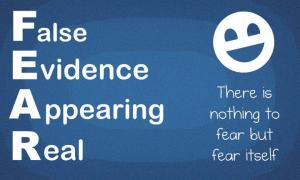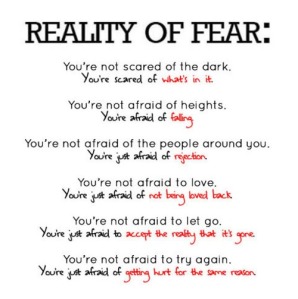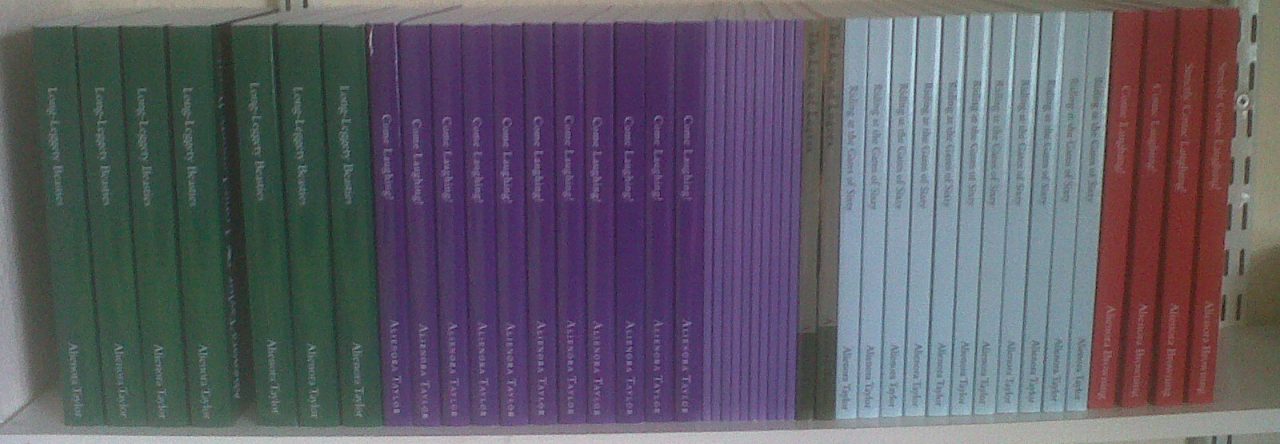
I suffer from chronic fear – so, finding this acronym today has been an incredible ‘Eureka!’ moment for me. It rings so many bells, you see, and explains why I tend to run away from confronting situations so easily – even (and this is the crucial part) if there is, actually, nothing threatening about them.
I react instantaneously to false evidence. It triggers traumatic memories of past reality, I suppose, for this is what usually starts the downward spiral. Often, there is an inconsistency which I can sense, even at the highest ledge of panic – and sometimes that comes down to this very simple thought and question: ‘Person A has never deliberately hurt, or frightened, me before, so why should he or she start now?’ In other words, through the dizziness of a panic attack, a part of me can see that the evidence I am making ever more real is totally out of character for the person I, momentarily, am terrified, or suspicious, of.
Sadly, the notion of truth versus falsehood, of dodgy versus reliable evidence is not accessible to the brain in a state of high anxiety. The Amygdala cannot distinguish between true external threat (sabre-toothed tiger, speeding car, for example) and the compelling, if false, evidence of emotional danger. It readies the body for flight (in my case) before the mind has had a proper look in, let alone a cool, slow analytical examination of the facts.
Having said that, however, this new (to me) acronym is immensely valuable because it gives me a weapon to use, a shield to hold up against the swords of terror and instant flight. It gives me a potential breathing space, a moment in which I can breathe deeply and ask myself, ‘Is this a genuine threat – or is it simply my False Evidence Appearing Real raising its destructive head once more?’
To put it more simply: ‘Is what I am frightened of seeing actually there? Never mind the echoes from the past. Stay in the present and examine objective reality – as if on a screen.’
I run away often. It is not always a physical escape. I am also prone to disappearing into my own head, becoming all-but invisible, when scared. What I am very bad at, however, is assessing the real level of danger and responding appropriately. Like a hedgehog, I curl myself into a tight ball, spikes sticking out, whether there’s a car/predator coming my way or not.
Let me give you a specific example. For nearly thirty years, I have felt the overwhelming urge to run away (and have sometimes done so) when approached by an unknown man on a narrow street/path. Pathological, it had become, to the extent that I would cross the road, or go another way, if I saw a bloke coming towards me.
Its origins are simple enough: A lone male approached me, knocked me to the pavement and sexually assaulted me many years ago. I had allowed FEAR to restrict my movements. But, today, I unpicked it: It is clearly false evidence, since no other man coming my way has punched me to the ground – but it appears very real because the body remembers that kind of physical trauma. It is, however, senseless to cross the road, or run away, on the unlikely assumption that every man walking towards me is a potential attacker.
There are many other examples I could give you of times when the evidence has seemed utterly real (because I have seen it through the glass of the past very darkly and have not thought to question its reality in the present) – and I have gone into escape mode for no good reason.
I am not going to beat myself up about this, or call myself nasty names. It is sad, not bad. I understand why I behave in this way – and, as I said earlier, it is very helpful to have some kind of verbal strategy I can adopt in order to talk myself down from the roof of panic.
It won’t be easy because, like all habits, this one has become deep-wired in my cranial circuitry. But it is definitely worth persevering with: Each time I successfully overcome the need to run away, I am, in effect, laying a different electrical system in my brain and firing my reactions up in a more useful, and less stress-inducing, way.
The anxiety is ancient. But so, in many respects, am I – and I have never believed that chronology should influence my ability to learn, change and grow. Age has nothing to do with it. Anxiety has run my life since I was too small to talk coherently -and has, in some cases, been deliberately planted and encouraged to grow.
I rarely question my fears. I think it would be useful to do so. This I will do in the journal tomorrow. But, for the meantime, I will end this post with a quote from Google Images which expresses many of them brilliantly. It shows that what we think we fear is, more often than not, a cover for something else, something far simpler and more primal.

You never know, I might find that the big, hard-hitting fears (the ones which propel me out of rooms, pubs and parties) are less gigantic and scary than I had thought once faced with a pinch of REAL salt and a twist of adult logic.


A beautiful post. Very honest and human…
Is it a coincidence to talk about such an emotion when, Donald Trump the archetypal fearless bully, triumphs in his desires to be President of the most powerful country in the world?
What does that say about fearlessness? About life and humanity? Without his fearlessness, he would not have won. But is winning all there is to life?
Those who try to comprise all phenomena in life are often confused and hurt. They are nourished by the Mystery of life. Those who focus on their own desires are clear and strong. They are deceived by their egos.
LikeLiked by 1 person
Thank you, Julie. FEAR is common to all of us, as is fear. Egos deceive every one of us – probably on daily basis.
LikeLike
This is powerful… and I never thought about people’s fears being a mask of something more primal.
LikeLiked by 1 person
Thank you, Noah. I think fear is deep-wired into the human psyche – and I know I don’t always (or even often) question its validity in the moment anywhere near stringently enough. xxx
LikeLike
The way you are unpicking these old fears, Ali, shows so much clarity of thought…and just how much determination you have to change them xxx
LikeLiked by 1 person
Thank you, Sue. It is desperately painful and difficult – but I cannot keep going round on that same old hamster wheel; it has become far too destructive. xxx
LikeLike
I agree, Ali, and can only applaud you for that xx
LikeLiked by 1 person
Thank you, Sue. xxx
LikeLiked by 1 person